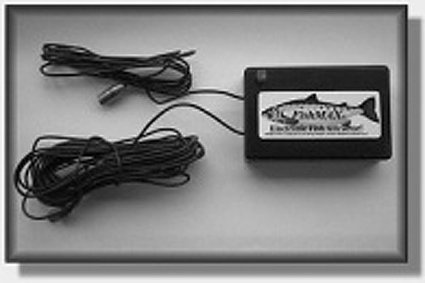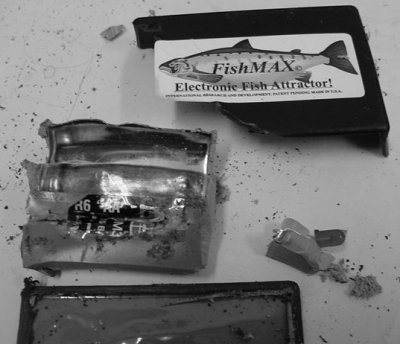John Riddell learns to his cost that fishermen can be as easy to catch as the creatures they pursue
I have a confession to make. I’ve been taken in by a scam. Normally this shouldn’t be cause for embarrassment, but I like to think of myself as a skeptic. I mean if anyone should be able to see these things coming it should be a skeptic. It’s only gullible people get taken in by scams right? It all comes from liking fishing too much. Salt water fishing in my case.
In our corner of the globe the target species is a fish commonly called a snapper. Fantastic eating and fun to catch. The world record is a bit over 30 pounds but a 2 or 3 pound fish is a good fish and much better eating. At least according to those of us who never catch the big ones. On a good day we catch the legal limit of nine per person (minimum size 27cm). But to have a good day you have to get everything right. Bait, berley, location, tide, tackle and weather all have to be right. Get one wrong and you catch fewer fish. Get two wrong and you catch none.
So like all fishaholics, between those rare occasions when I actually make it out on to the water, I spend a good deal of time thinking about fishing, reading the fishing magazines, listening to the weather reports, and thinking of ways of catching more fish, bigger fish, or let’s face it, some fish.
One day, while I was chatting to my cousin Don about fish, he mentioned that a friend of his swore by an electronic fish attractor. It is called “FishMAXTM“, and it’s a little box about the size of a pack of cigarettes. A sealed unit. Two wires come out of it. These wires are put in the water as far apart as possible. Once the electrodes are in the water, a little red light (LED) starts flashing on the box. That means it is working. It supposedly puts out a signal that attracts fish from up to three miles away.

Now I should have known better than to accept anecdotal evidence but we are talking about fishing. Rational thought gave way to greed. My ears perked up. “An electronic fish attractor? What a brilliant idea,” I thought. That was the first mistake. Allowing my enthusiasm to override logic. Here comes the next mistake. “Heck. If it really works, think of the money I could save on berley.” (Berley is what we call groundbait/chum, ie chemical fish attractor).
The phrase “If it really works” goes through the mind of everyone ever taken in by a scam.
I found an ad in the fishing magazine. Only $149.00 On the internet, $65.00
My next mistake. A little bit of knowledge. As opposed to enough. Fish have a thing called a lateral line. It is a line of receptors along the side of a fish that picks up small electrical signals in the water. Since fish can detect electric signals, it’s possible that an electronic fish attractor could work.
Next mistake. Do a little bit of research. As opposed to enough. I checked out the net. That’s inter, not fishing. There are lots of sites on the net about electric fishing. The thing is, it does actually work. There is a phenomenon called electrotaxis. If you get a fish in a certain type of electric field the fish will swim towards one of the electrodes. Once the fish gets really close it conveniently falls asleep (electronarcosis) and floats to the surface. Now this sounds too good to be true, but it is true. Fishologists and conservation types use these electric fishing things to study endangered species and also to catch pest species such as carp. When the electric field is switched off, the fish wakes up and swims away unharmed.
So I rang the toll free number in the fishing mag and told the “FishMAXTM” guy at the other end that they were only $65.00 on the net. “No problem.” he said and matched the price. Now I normally spend $8.00 on berley every time I go fishing so I was thinking “if it really works, think of the money I would save.”
I gave him my credit card details and he couriered it to me the next day.
So did it work? As soon as I got it I put the electrodes at opposite ends of my 3 foot tropical fish tank. The little red light began to flash. This means it is working. The fish in the tank carried on, blissfully unaware that they were being attracted to anything.
A guppy did swim up to examine one of the electrodes but then he swam away. The rest of the fish continued to distribute themselves randomly through-out the tank.
I confess to being disappointed. But not surprised. By now I had done a little more research. It turns out real electric fish attractors use high voltages (600V) and also a fair amount of power. They are also only effective in fresh water, and over very short ranges, a few metres at most. My fish attractor was supposed to work for thousands of hours without a battery replacement. Something began to smell fishy.
Since then I have been fishing four times. I used the FishMAXTM electronic fish attractor on two of those occasions. I caught fish. I usually do. But I caught more fish when I didn’t use it. On one of the occasions I used the FishMAXTM the berley I had been using fell off without my noticing. Even though the FishMAXTM was still flashing the fish stopped biting. When I realized the berley had fallen off, I put more berley out and we began to catch fish again.
By now I had decided that if it wasn’t a scam, it should be.
The thing is, fisherpersons are very superstitious. I try not to be. I usually catch a limit on days the Maori fishing calendar says are bad for fishing. And I always take bananas even though they are supposed to be bad luck.
The problem with fishing is the outcome can be so variable. This variability is the stuff that superstitions are made of. Most of the time you can’t see what is happening under the water. Sometimes the reasons people use to explain why they do or do not catch fish don’t have much to do with the real reasons. From the point of view of a scam artist, fishermen have got to be an ideal target species.
Ok, so lets think of a way of getting fishermen to give us money for a worthless and therefore cheap to make, product. What we need is a small sealed box that has a flashing light (LED) to show that something is happening. It needs to be sealed so you can’t look inside and see there isn’t much there. Inside the box we need batteries to power the light. We also need to have some wires that come out of the box. These wires can be put into the water. Once the wires are in the water the circuit is complete and the light begins to flash. We tell the fishermen that when the wires are in the water and the light is flashing that fish will be attracted.
One of the boys at the pub happens to have a PhD in physics and conveniently runs an electronics research lab. He very kindly connected my FishMAXTM up to one of his squiggleoscopes. There were a couple of volts DC but not much else. Next came the hacksaw and the Stanley knife. The unit was filled with a resin. It took quite a bit to get into it. Inside were two 1.5V AA batteries and the wire that connected them to the flashing LED. If there were any silicon chips or even resistors and capacitors or electrical components of any kind, the boys in the lab would have recognised them. But they just weren’t there. I admit that even I was surprised. I had assumed there would be some sort of circuit, even if it were just to make the light flash. It turns out the LED does that automatically.

So now I get to play games with the Commerce Commission and the Fair Trading Act.
I’ll let you know how it goes.


